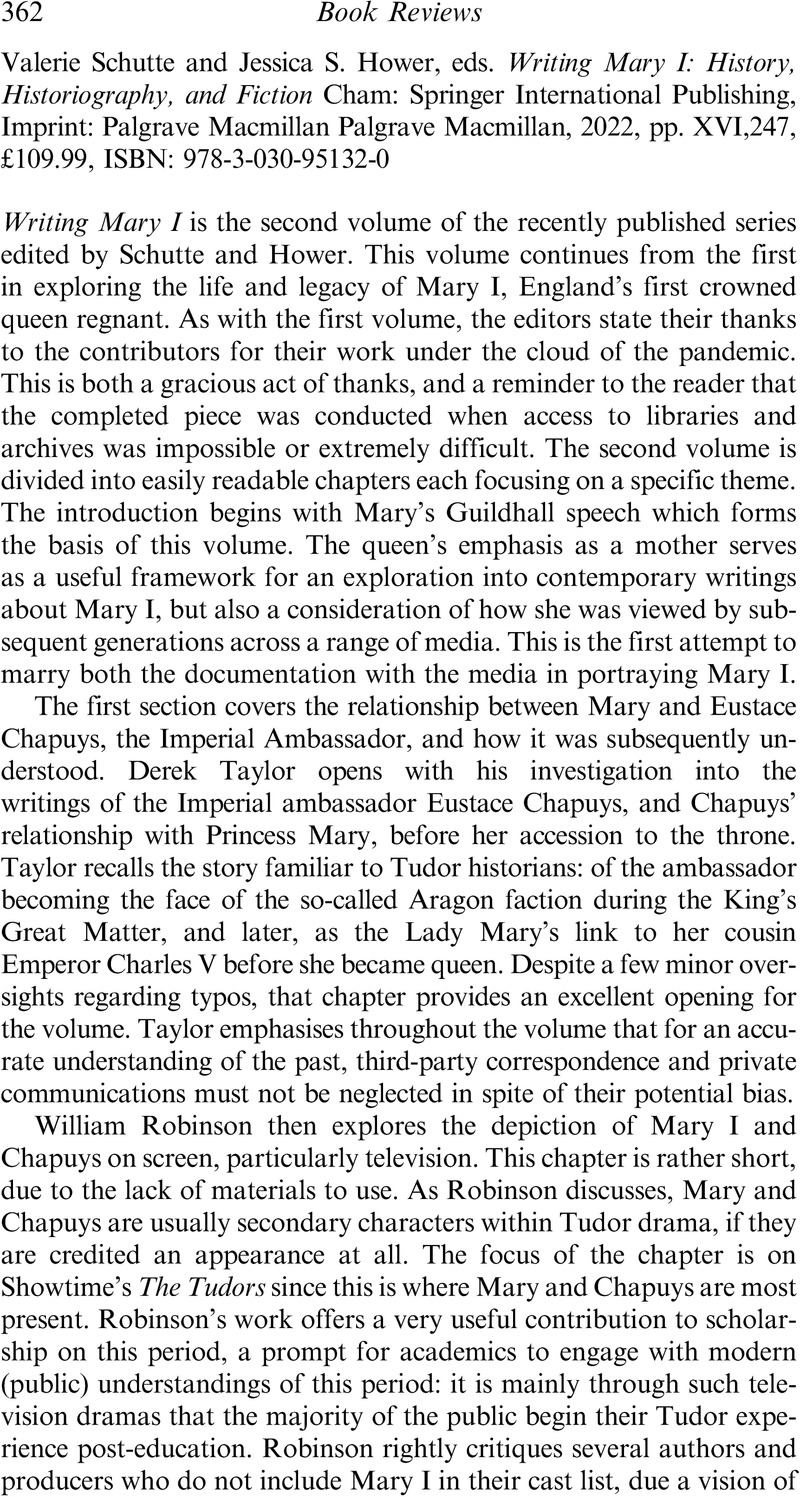No CrossRef data available.
Article contents
Valerie Schutte and Jessica S. Hower , eds. Writing Mary I: History, Historiography, and Fiction Cham: Springer International Publishing, Imprint: Palgrave Macmillan Palgrave Macmillan, 2022, pp. XVI,247, £109.99, ISBN: 978-3-030-95132-0
Review products
Valerie Schutte and Jessica S. Hower , eds. Writing Mary I: History, Historiography, and Fiction Cham: Springer International Publishing, Imprint: Palgrave Macmillan Palgrave Macmillan, 2022, pp. XVI,247, £109.99, ISBN: 978-3-030-95132-0
Published online by Cambridge University Press: 26 April 2023
Abstract
An abstract is not available for this content so a preview has been provided. Please use the Get access link above for information on how to access this content.

- Type
- Book Review
- Information
- Copyright
- © The Author(s), 2023. Published by Cambridge University Press on behalf of Trustees of the Catholic Record Society



